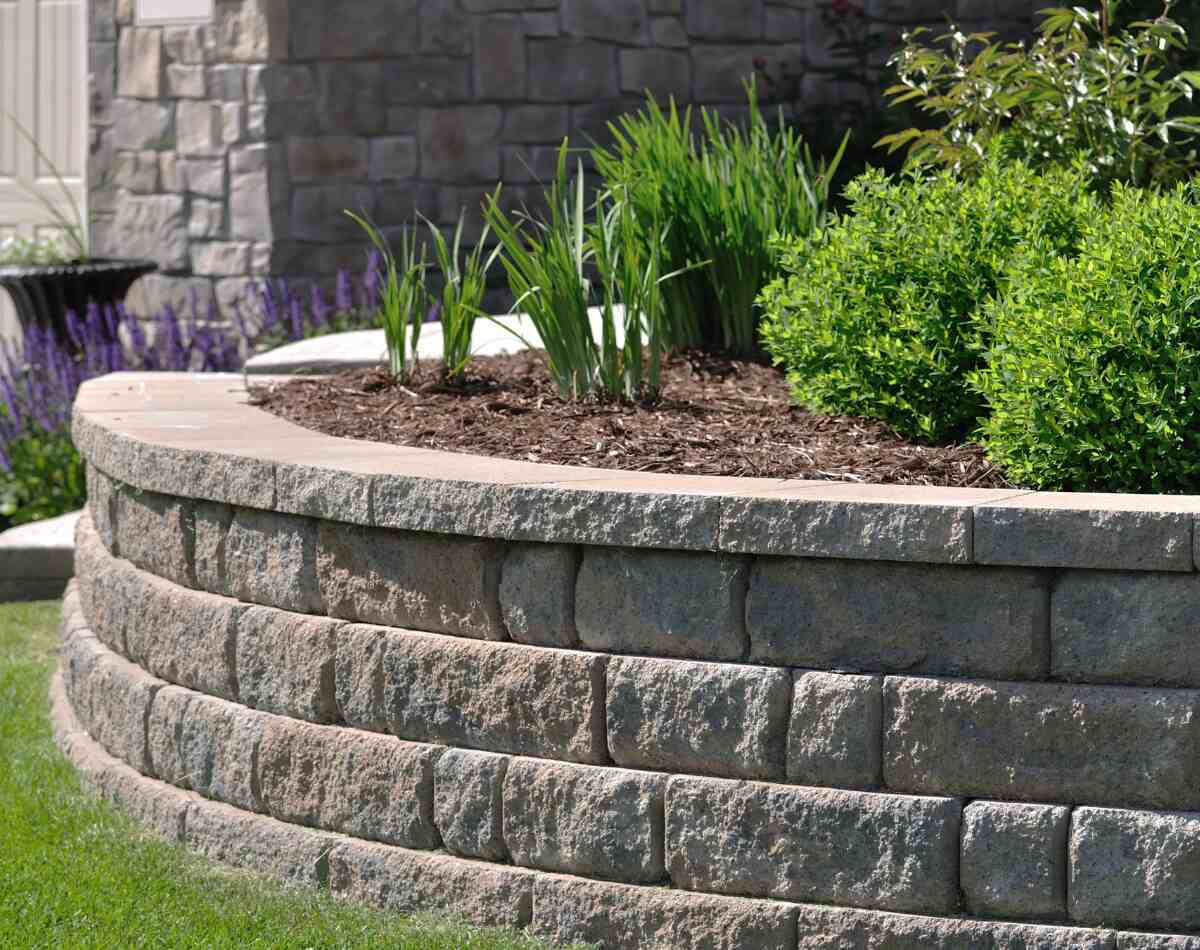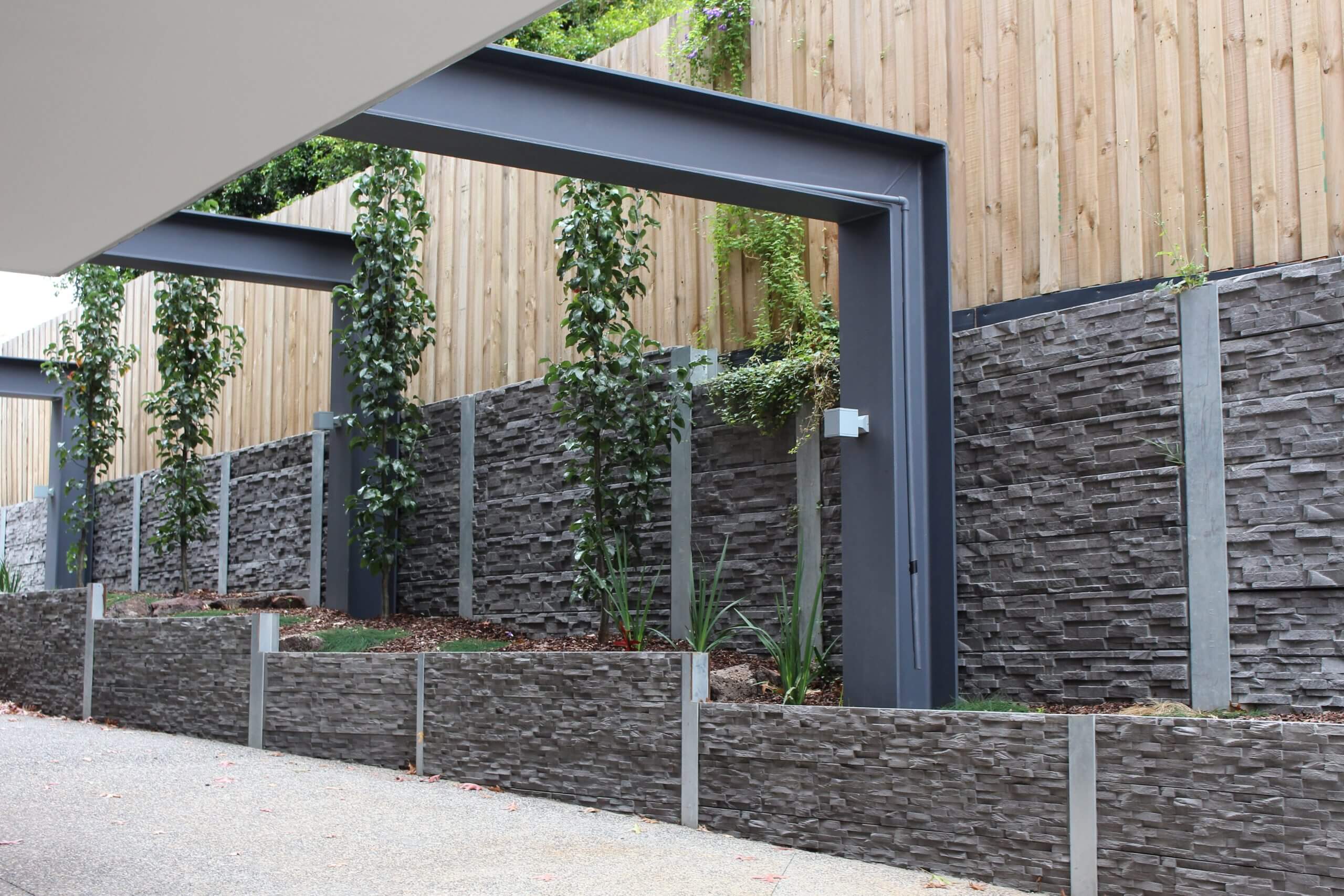The Ultimate Guide to OKC Precision Retaining Walls for home landscaping success
The Ultimate Guide to OKC Precision Retaining Walls for home landscaping success
Blog Article
Secret Considerations for Structure Efficient Retaining Walls in Your Backyard
When you're considering developing a maintaining wall surface in your backyard, it's crucial to think regarding several key aspects. The wall's function, the products you'll make use of, and the particular soil problems can all impact its performance and durability.
Recognizing the Function of Your Retaining Wall
When you think of constructing a maintaining wall surface, consider its primary objective: stabilizing dirt and protecting against disintegration. Retaining walls offer necessary assistance for sloped landscapes, assisting to keep dirt honesty. You'll find they're crucial in areas where water overflow might otherwise remove dirt, leading to pricey fixings and landscape damage.
By keeping back planet, these walls create degree surfaces for yards, outdoor patios, or paths. This not only enhances your yard's visual appeals however additionally advertises far better water drainage, decreasing water pooling in unwanted locations. If you're managing steep inclines, a sound retaining wall can stop landslides, guaranteeing safety and security for you and your building.
Ultimately, recognizing the function of your retaining wall surface will certainly lead your layout decisions and assist you develop a useful, durable framework that meets your demands. Take a moment to assess your landscape; it'll pay off in the lengthy run.
Selecting the Right Materials
When selecting materials for your retaining wall, you'll wish to consider durability, visual appeals, and cost. Each aspect plays an essential duty in guaranteeing your wall surface stands the examination of time while looking great and fitting your budget. Allow's discover how to make the most effective selections for your task.
Material Toughness Factors
Selecting the right materials is vital for the long life and performance of your retaining wall, considering that their toughness directly influences the wall surface's capability to stand up to ecological anxieties. Begin by considering your local climate; products like concrete and stone withstand dampness and temperature changes well. If you stay in an area vulnerable to hefty rainfalls, choose for products with great drain residential or commercial properties, like gravel or porous blocks, to avoid water build-up.
Some products perform better in details soil kinds, so it's important to match them as necessary. Picking durable products warranties your retaining wall surface stands strong, safeguarding your lawn for years to come.
Visual Design Choices
Long lasting materials not just assure your retaining wall's structural stability yet additionally play a key role in its aesthetic allure. Do not fail to remember about the wall surface's form-- rounded walls can produce a softer appearance, while straight lines can really feel more structured. By very carefully choosing products that line up with your aesthetic vision, you'll improve your exterior room while ensuring your wall stands solid against the elements.
Cost-Effectiveness Analysis
Choosing the best materials for your retaining wall surface isn't almost aesthetics; it's also crucial for your spending plan. When choosing materials, consider both in advance expenses and long-term longevity. For circumstances, cinder block might be pricier originally, but their longevity can conserve you cash on fixings. On the various other hand, wood can be much more budget-friendly but may require substitute faster.
Do not neglect to consider upkeep prices also (OKC Precision Retaining Walls). Some products, like natural rock, can include elegance and call for much less maintenance, while others could require routine therapies
Ultimately, evaluate the pros and disadvantages of each alternative versus your budget and the wall surface's desired purpose. Investing sensibly in materials now can stop expensive issues later on. Pick products that balance cost and performance effectively.
Assessing Dirt Conditions and Drain
As you start your task, reviewing soil problems and water drainage is vital for the success of your retaining wall surface. Beginning by examining the kind of dirt in your yard. Sandy soil drains pipes well however lacks security, while clay soil can retain wetness, bring about push on your wall. Evaluate the soil's wetness web content by digging a little hole and observing how swiftly it dries out.
Next, assess the incline of your lawn. If water naturally streams towards your wall surface, you'll need to apply a water drainage remedy to stop disintegration and pressure build-up. Think about installing perforated pipes or crushed rock backfill behind the wall surface to facilitate drainage.
Last but not least, observe any kind of nearby trees or greenery; their origins can impact soil stability. By comprehending your soil problems and carrying out appropriate water drainage, you'll develop a strong structure for your retaining wall that stands the test of time.
Following Local Building Ordinance
Prior to you begin constructing your retaining wall surface, you need to study local regulations to assure compliance. It's important to recognize what allows you have to get, as this can save you from pricey penalties or having to remodel your work. Taking these steps seriously will help you construct a secure and effective structure.
Research Study Local Rules
Recognizing local laws is necessary when intending your retaining wall surface task, especially given that constructing codes can differ substantially by location. Start by consulting your regional structure department or town to discover particular needs. Search for guidelines click for more info on wall elevation, materials, drain systems, and architectural integrity. Many areas have constraints on the sorts of products you can utilize and just how high you can build. You'll likewise wish to take into consideration the zoning laws that might affect your task. Overlooking these laws can bring about costly penalties or the demand to renovate your job. By doing your research upfront, you can assure your retaining wall surface meets all needed codes and blends perfectly right into your lawn.
Obtain Essential Licenses
When you've looked into neighborhood policies, the next step is to acquire the necessary authorizations look at here for your retaining wall surface task. This process assurances your wall surface conforms with building ordinance and safety and security standards. Reach out to your local structure authority to discover what permits you need. They might require details plans or design analyses, especially for larger walls. Be prepared to send thorough drawings, consisting of measurements and materials. Do not neglect to inspect if your project impacts drainage or bordering homes, as these aspects could call for added authorizations. Securing the appropriate authorizations can conserve you from pricey fines or needing to dismantle your wall later on. Keep in mind, complying with the policies currently will certainly lead to a smoother building and construction experience.

Planning the Style and Aesthetics
As you commence planning the layout and visual appeals of your retaining wall surface, take into consideration exactly how it will balance with the surrounding landscape. Assume regarding the materials you'll use-- stone, block, or concrete-- and just how they'll complement your home's design and the natural environments in your lawn. Pick shades and structures that mix seamlessly with existing attributes like outdoor patios, paths, or yards.
Following, picture the wall's form and height. Curved walls can soften a stiff landscape, while straight lines might communicate a more modern-day appearance. Don't neglect to integrate plants and plant around the wall for an all-natural touch; this can improve its appeal and integrate it into the atmosphere.
Finally, bear in mind functionality. Your design ought to not only be aesthetically pleasing but additionally serve its function properly. By thoughtfully preparing these components, you'll develop a keeping wall surface that enhances your lawn's beauty while fulfilling its structural role.
Determining Height and Thickness Needs
To construct a sturdy retaining wall, you require to accurately determine its height and density requirements based upon the dirt problems and the elevation of the incline it will certainly support. Beginning by assessing the slope's angle and the type of dirt, as different soils put in varying quantities of pressure.
For walls over 4 feet high, take into consideration a thickness of at the very least 12 inches. If the wall is taller, increase the density proportionally to preserve security.
Next, calculate the height of the wall by gauging the upright distance it requires to preserve. For each foot of elevation, you must typically intend for a density of one-third of the wall's height.
Constantly remember to represent extra elements like drainage and backfill, which can affect your wall surface's style. Proper calculations currently guarantee your retaining wall surface stands solid and lasts for several years to find.
Upkeep and Long Life Considerations
While preserving your retaining wall could feel like a reduced priority, disregarding it can bring about significant problems in time. Regular examinations are important; look for fractures, protrudes, or any kind of indications of water damages. Addressing these problems early can conserve you from costly repair services down the roadway.
Maintain an eye on drain systems, also. Clogged drains can cause water to develop, applying pressure on your wall and endangering its security. Clear debris and guarantee appropriate circulation to preserve longevity.
You might additionally desire to assess sealing your wall surface to secure it from moisture and weathering. Depending on the material, this could require reapplication every couple of years.
Finally, landscape like it design around your wall surface can sustain its integrity. Prevent planting huge trees nearby, as their origins can undermine the structure. With positive maintenance, your retaining wall surface can serve you well for several years to find.

Regularly Asked Inquiries
Can I Construct a Retaining Wall by Myself, or Should I Employ a Specialist?
You can certainly construct a maintaining wall yourself if you have the right tools and expertise. Employing an expert assurances it's done appropriately, particularly for bigger or even more complex frameworks. Consider your skill degree before determining.
What Are one of the most Common Mistakes Made When Building Retaining Walls?
When developing retaining walls, you may forget correct drain, skip making use of the best materials, or overlook reinforcement. These common blunders can cause architectural failing, so take your time and plan carefully to stay clear of problems.
Exactly how Do I Know if My Retaining Wall Requirements Reinforcement?
You'll know your retaining wall surface requires reinforcement if you discover fractures, leaning, or bulging. Look for water merging behind it or soil disintegration near the base. Address these signs without delay to avoid additional damages.
What Plants Are Ideal for Landscaping Around a Retaining Wall?
When landscaping around a keeping wall, consider making use of low-maintenance plants like succulents, ornamental grasses, or slipping ground covers - OKC Precision Retaining Walls. They'll flourish in those problems and include elegance while stopping soil erosion around your wall
How Can I Prevent Disintegration Around My Retaining Wall?
To avoid erosion around your retaining wall, you can plant ground cover, use compost, and mount water drainage systems. Routinely examine for water build-up and adjust landscaping to reroute overflow far from the wall surface.
Report this page